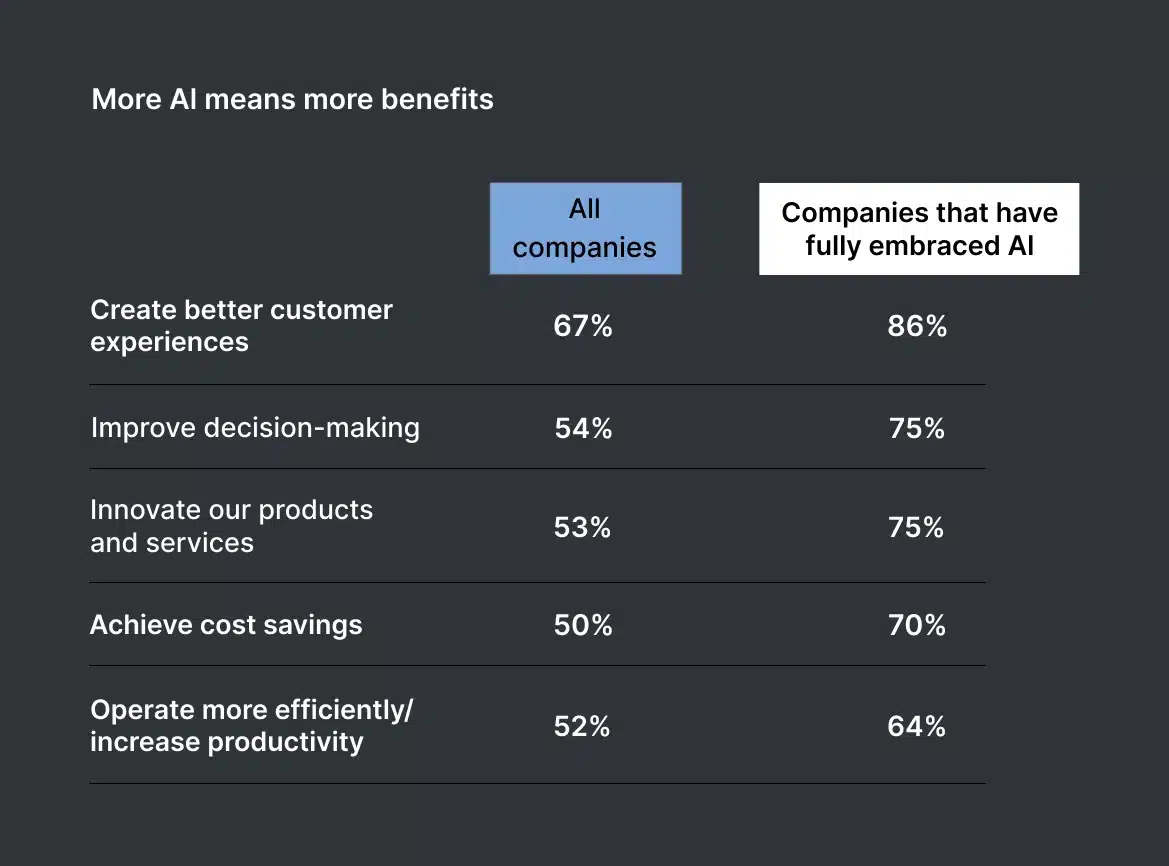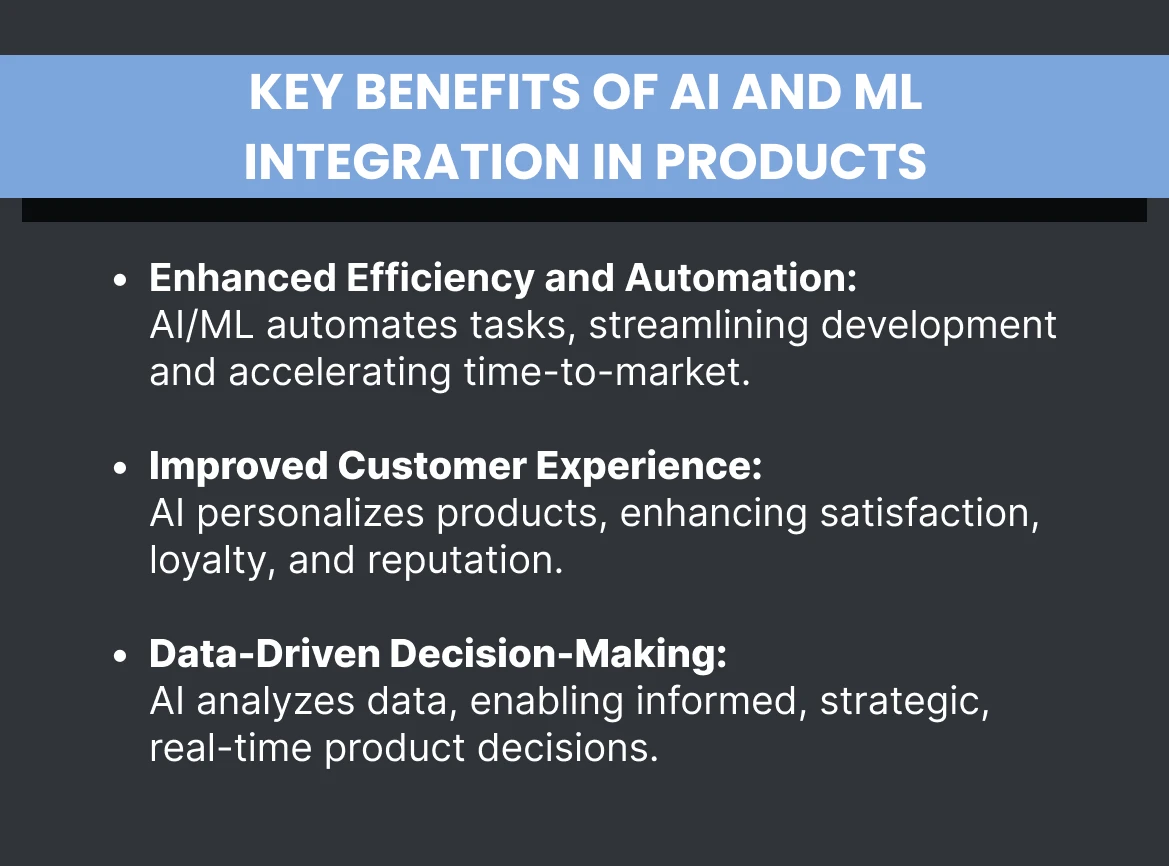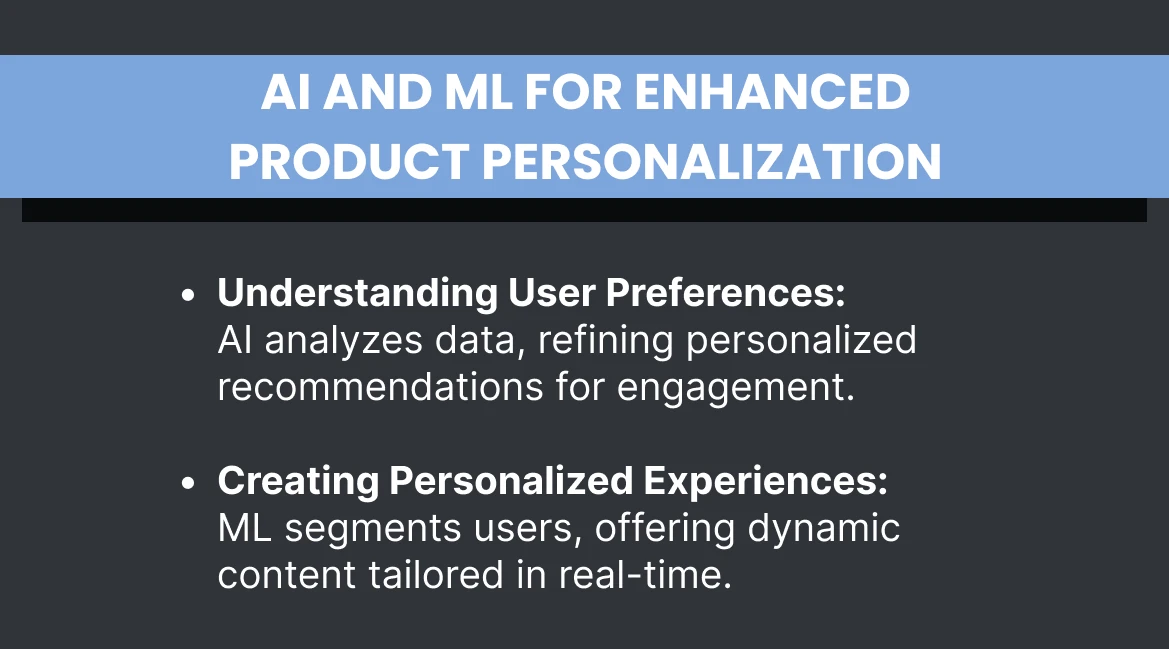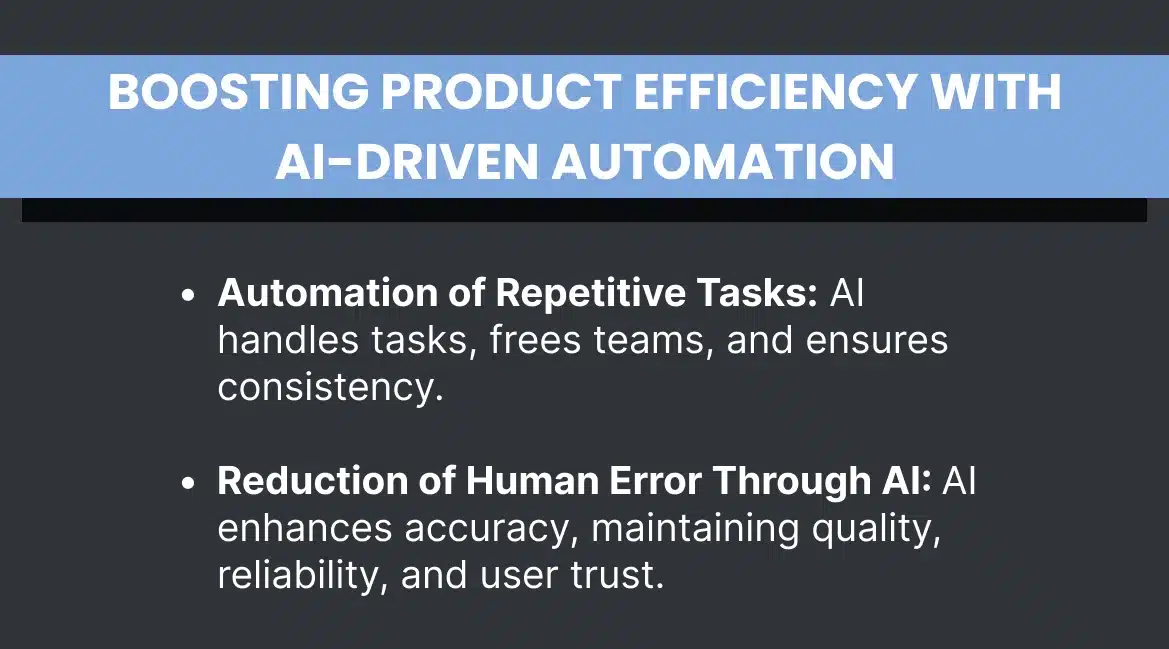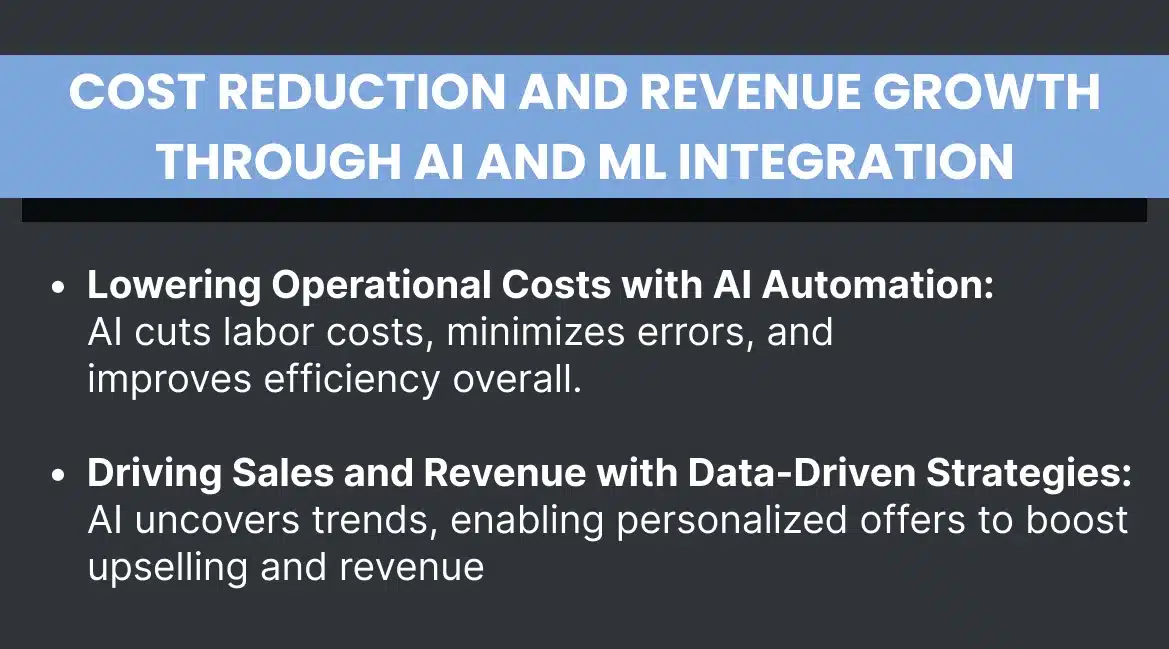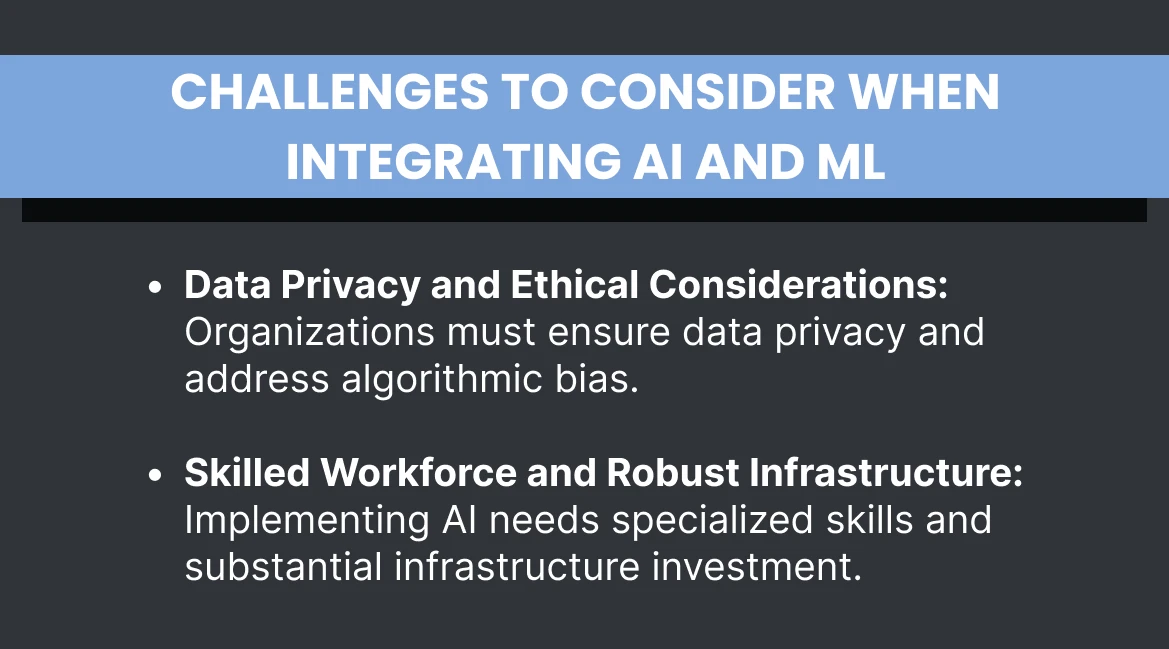Table of content
According to a recent survey by PwC, 86% of companies report that AI is a mainstream technology in their organization. At the same time, McKinsey estimates that AI could contribute up to $13 trillion to the global economy by 2030.
These technologies are not just add-ons; they offer a strategic advantage that drives innovation, enhances product offerings, and improves operational efficiency.
This article explores the strategic benefits of incorporating AI and ML into products, highlighting key areas where these technologies can substantially impact.
Why are AI and ML Game-Changers in Product Development?
AI and ML have fundamentally changed how products are developed, deployed, and refined. Digital transformation has spurred the need for products that are not only efficient but also intelligent and capable of evolving alongside user expectations and market trends.
By leveraging AI and ML, product developers can create solutions that adapt in real time, offering users a dynamic and tailored experience.
These technologies enable product development teams to automate complex tasks, analyze vast amounts of data precisely, and provide insights to drive smarter decision-making.
Furthermore, AI and ML can help anticipate user needs, allowing businesses to deliver proactive solutions that exceed customer expectations.
In short, integrating AI and ML is not just a technological upgrade; it’s a strategic investment in a product’s future success.
Key Benefits of AI and ML Integration in Products
The integration of AI and ML into products provides significant strategic benefits. These advantages go beyond simple functionality upgrades, enabling transformative changes that position a product far ahead of its competitors. Key benefits include:
Enhanced Efficiency and Automation
AI and ML free up human resources for more strategic and creative endeavors by automating repetitive and time-consuming tasks. This leads to a more streamlined product development cycle and faster time-to-market for new features.
Improved Customer Experience
AI-driven insights help tailor products to meet individual user needs, improving overall satisfaction and engagement. This level of personalization fosters customer loyalty and can significantly enhance the product’s reputation.
Data-Driven Decision-Making
AI and ML can process and analyze data at a scale and speed that human teams cannot match. This capability empowers product managers and developers to make informed decisions based on real-time insights, leading to more strategic product iterations.
Overall, integrating AI and ML can be a game-changer, equipping products with the ability to anticipate and respond to customer needs effectively while creating new opportunities for growth and expansion.
AI and ML for Enhanced Product Personalization
Personalization has become a critical factor in product success. Consumers increasingly expect tailored experiences that cater to their unique preferences and behaviors. AI and ML provide the tools needed to achieve this level of personalization at scale.
Understanding User Preferences Through AI-Driven Analytics
AI algorithms can analyze user data to identify patterns and trends, enabling products to offer personalized recommendations and content. By continuously learning from user interactions, AI systems can refine these recommendations, providing a more engaging and relevant experience.
Creating Personalized User Experiences with ML Algorithms
Machine learning can segment users based on various criteria, such as behavior, preferences, and demographics, allowing for creating dynamic content that adjusts in real-time. For instance, an e-commerce platform can recommend products based on a user’s browsing history, while a streaming service can suggest shows based on previous viewing habits.
In this way, AI and ML enable personalization that fosters more profound connections with users, increasing the likelihood of repeated engagement and customer loyalty.
Boosting Product Efficiency with AI-Driven Automation
Automation is one of the most significant benefits of AI and ML integration. It enables products to perform tasks that would otherwise require considerable human effort. By incorporating AI-driven automation, products can achieve greater accuracy and consistency while reducing the likelihood of errors.
Automation of Repetitive Tasks
AI-powered systems can handle many repetitive tasks, such as data entry, reporting, and monitoring. For instance, chatbots equipped with AI can manage customer inquiries, reducing the burden on support teams and ensuring a consistent user experience.
Reduction of Human Error Through AI
AI systems can operate precisely, making them ideal for tasks that demand high accuracy, such as data analysis and predictive maintenance. By reducing the potential for human error, AI helps maintain the quality and reliability of the product, ultimately enhancing user satisfaction and trust.
Integrating AI-driven automation into products streamlines operations and allows for the reallocation of resources to higher-value activities, contributing to overall business efficiency and productivity.
Cost Reduction and Revenue Growth through AI and ML Integration
Incorporating AI and ML into products offers a unique opportunity to optimize operational costs and boost revenue. These technologies can directly impact the bottom line by enhancing efficiency and enabling data-driven decision-making.
Lowering Operational Costs with AI Automation
AI-driven automation reduces the need for manual labor, particularly for repetitive tasks. This cuts down on labor costs and minimizes the expenses associated with human errors and process inefficiencies. For example, an AI-powered customer support system can handle thousands of queries simultaneously, eliminating the need for a large customer service team and significantly reducing costs.
Driving Sales and Revenue with Data-Driven Product Strategies
By leveraging AI and ML, companies can uncover hidden trends in consumer behavior and optimize their sales strategies accordingly. Predictive analytics, a powerful application of ML, allows businesses to anticipate customer needs and respond proactively. This can lead to increased upselling and cross-selling opportunities, ultimately driving higher revenue. For instance, a retail app using ML algorithms can personalize marketing offers to individual users, increasing the chances of conversion.
Through these capabilities, AI and ML can become pivotal tools for achieving long-term cost savings and revenue growth, positioning products for success in competitive markets.
Challenges to Consider When Integrating AI and ML
While the benefits of AI and ML integration are significant, businesses must also consider the challenges associated with these technologies. Addressing these challenges early on can facilitate a smoother integration process and maximize the return on investment.
Data Privacy and Ethical Considerations
One of the primary concerns with AI and ML is handling sensitive user data. Organizations must implement stringent data privacy protocols and ensure compliance with regulations such as GDPR and CCPA. Furthermore, ethical considerations, such as algorithmic bias, must be addressed to ensure that AI systems operate fairly and transparently.
The Need for a Skilled Workforce and Robust Infrastructure
Implementing AI and ML requires specialized data science, engineering, and cybersecurity skills. This often necessitates additional training or hiring, which can be costly and time-consuming. Additionally, AI systems demand robust data storage and processing infrastructure, which may require significant upfront investment.
While these challenges may seem daunting, they are manageable with careful planning and strategic investments. By acknowledging and addressing these potential obstacles, companies can build a solid foundation for successful AI and ML integration.
Conclusion
The strategic benefits of integrating AI and ML into products are clear. They offer substantial efficiency, personalization, cost savings, and revenue generation advantages. As digital transformation accelerates, businesses that embrace these technologies are well-positioned to stay ahead of the competition and deliver superior customer experiences.
While data privacy and the need for skilled professionals exist, they can be overcome with a proactive approach. By investing in AI and ML, companies enhance their products and create value for their customers and stakeholders, ensuring sustained growth and innovation.
